A Small Solo Fishing Outrigger Canoe
KANU-1 is a design commissioned by Paul Cheevers in Papua New Guinea. It is a solo paddle canoe intended for reef fishing off the beach. Paul writes:
My idea is to make a product that will give a boost to the local fisheries sector. At present most fishing is done from Yamaha-powered banana boats (pangas). That is fine if you can afford one, but most cannot. I am aiming more towards the women in the village who would paddle out at dusk to do some bottom lining. A craft which one person can carry to the water, and without having to wake the whole village when they return, asking for help to drag it back up.
I cannot see a cheaper and easier way to build a canoe than in a mold with isophthalic polyester resin, csm(chopped strand mat) and a bit of woven roving. It’s pretty much a case of gelcoat and skincoat on day one and the final layers day two. All of this work can be done locally with a bit of supervision. Plywood is out of the question due to cost and rot, as in lack of maintenance.
We used the free plans of the KIR-7 “One Man Canoe” from the Coastal Fisheries Programme site as a starting point, since Paul had already built one out of timber and plywood and was generally happy with the design. I loaded the drawings into Rhino and built a model. Spinning it around on screen I could see the little canoe had nice proportions and a sweet sheer. Gratified that Rhino’s hydrostatics agreed with the figures given on the plans, I modified the hull with rounded-V sections and a shallower draft to provide less surface area and better turning.
There are watertight bulkheads both ends with optional access hatches for dry storage, and a floor running between them.
Even though KANU-1 is intended for paddling only, we kept the fore and aft symmetry of the original KIR-7 proa design. Invariably someone is going to want the ama mounted on the other side, in which case all they need to do is turn the boat around.
We both thought the KIR-7 ama was too short and blocky, so I started from scratch. It’s a long banana shape to complement the hull, with a rounded diamond shape cross-section. The ama hull and deck are both molded GRP, joined with a “hat-box” joint. Total ama displacement is 71kg (157lb).
In order to avoid the labor and expense of epoxy laminated curved beams, we went with straight, solid rosewood timber. Apparently rosewood grows like a weed in PNG. A bit heavier than optimum, but hey… rosewood!
The beam to ama connective struts were a bit of problem because the ama has no hatch or any interior access at all, once the hull and deck parts are bonded together. I modeled a simple fiberglass bipod strut that is bonded with Sikaflex to a flat on the ama deck, and then bolted to the beams. The glass strut does away with cleats, timbers and rope of the original KIR-7. It will help production move along by eliminating some fiddly bits. The beams are lashed to the main hull in the traditional fashion - with rope.
The beams extend out past the hull and ama in order to facilitate carrying the canoe up the beach, and to carry long fishing spears on the hull side.
The hull alone weighs 16kg (35lb). Fully assembled and ready for the water the canoe weighs in at 29kg (64lb). Design displacement at waterline is 130kg (287lb) which gives us a 100kg (220lb) useful load, or one person + 30kg.
Paul is building the plug out of red cedar strips, which begs the question: What would a cedar strip KANU-1 weigh in at?
Another tantalizing question is how would it do with a small crab claw rig?
NOTE: Paul sent along some nice inspirational images of local outrigger canoes, the painting by C. Cooper being my favorite.
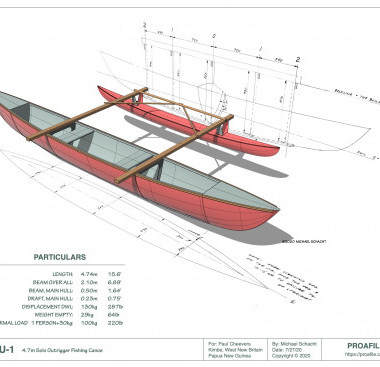
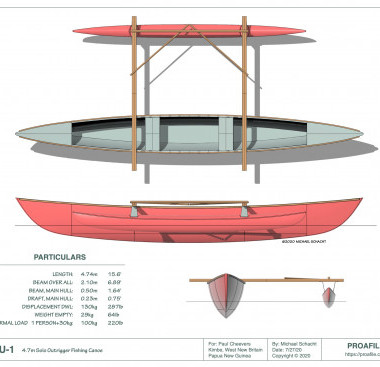
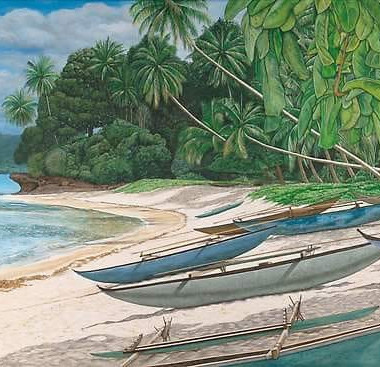
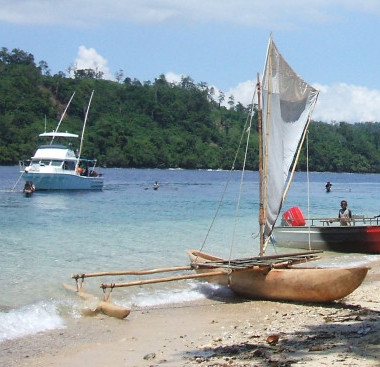
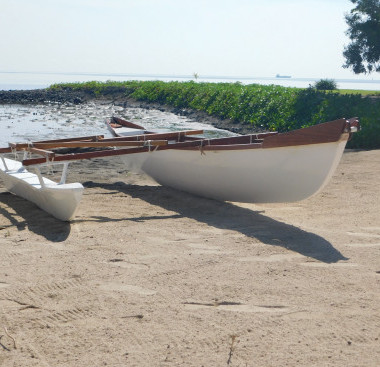
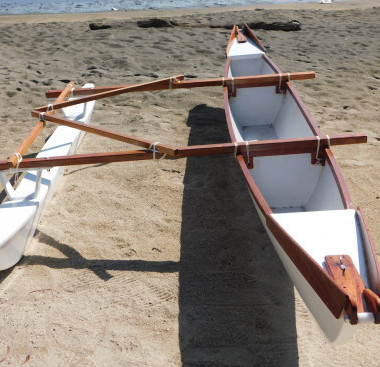
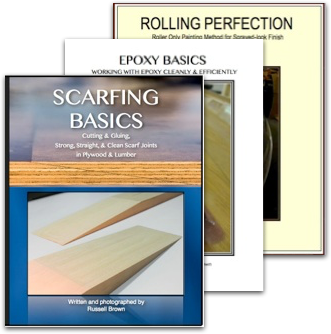
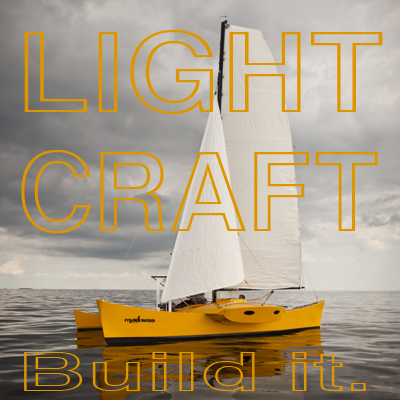
At the risk of being pedantic re the question, I have to ask.
As a plug or as a finished boat.
My W.A. G. for a finished boat in 1/4” red cedar w/ 6 oz f’glass both sides hull and float…. 56# a little less if you laminate up some cedar beams in instead of the rosewood (!).
Good program statement and a nice design, best wishes.